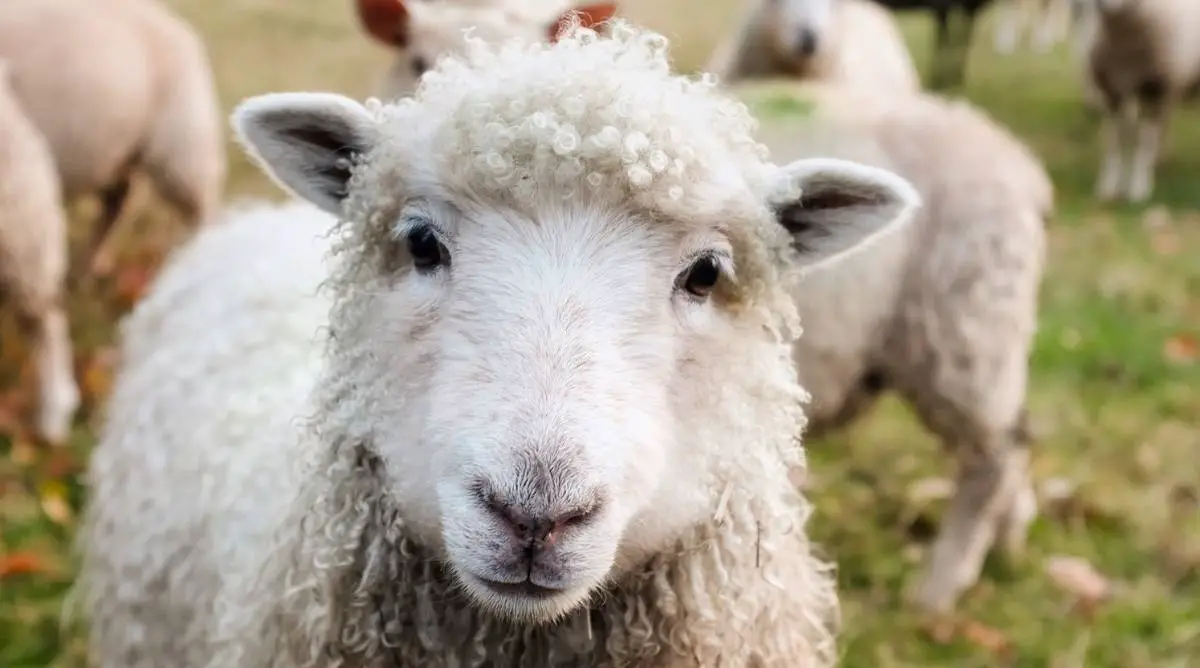Sheep are intelligent animals capable of learning and adapting to information gained in their environment. They have complex emotions and need social interactions to remain healthy.
Table of Contents
Are Sheep Smart?
In the popular imagination, sheep aren’t seen as particularly smart animals. When humans are called “sheep,” it’s an insult meaning they don’t think for themselves and follow others blindly.
In reality, sheep are intelligent animals that can gain new skills necessary for survival. They can also memorize information and form complex friendships with other sheep in the flock and the humans who handle them.
Sheep are also innovative problem solvers. For example, in Yorkshire, England, sheep learned how to get past hoof-proof metal cattle grids and into protected gardens by rolling on their sides over and over.
Are Sheep Smarter Than Other Farm Animals?
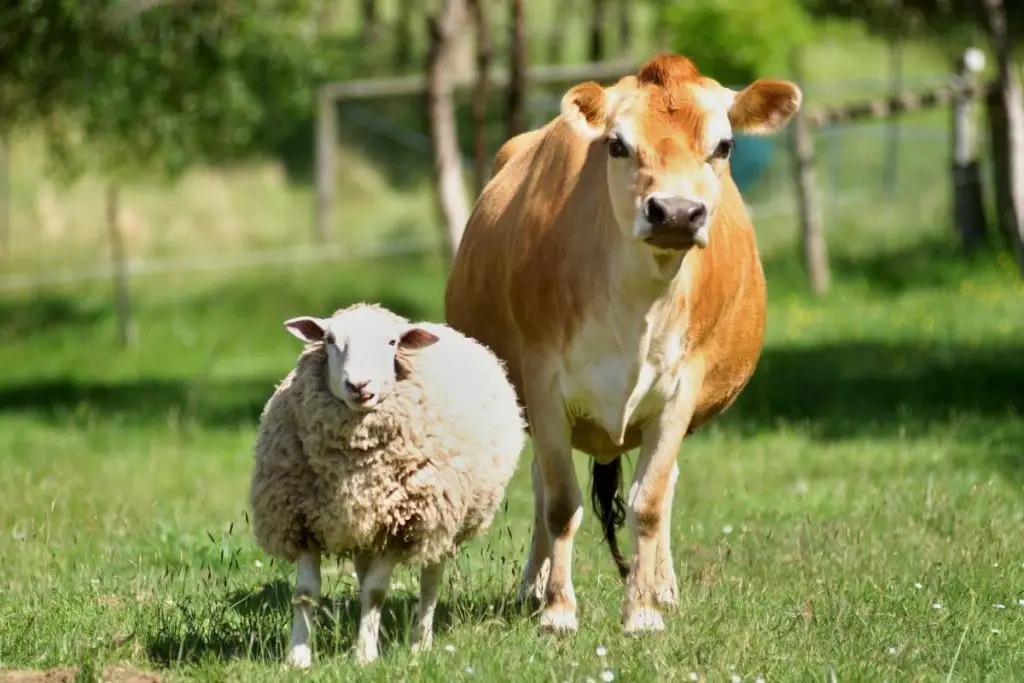
Pigs are known to be the smartest farm animals. According to one study, pigs have a higher level of intelligence than cows and goats.
While there’s no standardized IQ test for animals, sheep are likely as smart as cows and goats, and less intelligent than pigs.
Aspects of Sheep Intelligence
How is sheep intelligence measured? We know how smart sheep are by looking at the skills and abilities that enable them to live in and adapt to their environment. These include cognition (IQ), relationships (EQ), recognition, smell, vision, object permanence, memory, and speed of learning.
Cognition (IQ)
Cognition (IQ) is the capability of animals to acquire and process information. It is also the ability to decide using the information gained in a particular environment.
- Sheep can learn skills by observing other sheep.
- Sheep can tell the difference between different colors.
- Sheep know when they are sick, and selectively pick plants to cure themselves.
- They use vocalizations to communicate with fellow sheep. We know the vocalizations as bleats or ‘baas.’
- Owners can teach sheep to respond to their names.
Relationship (EQ)
Sheep are social animals and need to form mutual, close bonds to live a healthy life.
Isolated sheep relax when shown photographs of sheep they are familiar with. Sheep can detect different emotions in fellow sheep with whom they have a close friendship. Male sheep will also come to the rescue of friends involved in a fight within the flock.
Lambs also develop emotional bonds with their mothers from birth. The female sheep and lamb bond is so crucial that if the mother and lamb get separated less than four months after birth, the lamb and ewe become distressed and start pacing and gnawing at objects.
Recognition
Sheep can intelligently differentiate the faces of sheep in their group of sheep and the humans they interact with often.
The ability to recognize faces helps the sheep feel safe. Typically sheep will keep away from individuals they cannot recognize.
Sense of smell
Sheep have a heightened sense of smell thanks to the olfactory bulb that is a part of the brain. The olfactory bulb in sheep is three times the one in the human brain. Sheep use their acute sense of smell to:
- Identify suitable foods to eat.
- Ewes use smell to find their offspring, especially after birth. Female sheep can differentiate the scent of their young ones and their companions.
- Detect a predator. Sheep can smell a predator before it comes close, giving the sheep plenty of time to run to safety.
- Rams use flehmen to detect pheromones in female sheep to know if they are ready to mate.
Vision
Sheep have outstanding visual capabilities. They have a field of vision ranging between 270° and 320°, allowing them to see objects behind them without turning back.
Sheep can see various colors such as white, black, blue, yellow, green, and purple. They can also differentiate between shapes.
Object permanence
Object permanence is the ability of an animal to know that an object still exists even if it cannot see it because it is hidden.
We know that sheep have object permanence because they know that food hidden under a plate is still there even if they cannot see it. By contrast, human children below the age of eight months do not have object permanence.
Memory
Sheep can memorize up to 50 unique faces of sheep and humans and keep that memory for years.
They keep information about edible plants and those that are poisonous.
Learning Quickly by Observing Others
Sheep learn quickly by observing others. For example, lambs that have seen others feeding from a bottle will learn faster how to suck on one than those who have not.
Sheep also observe where others in their flock flee to safety, and do the same. Free roaming sheep can also learn alternative places to find food by watching where other sheep find their food.
Research on Sheep Intelligence
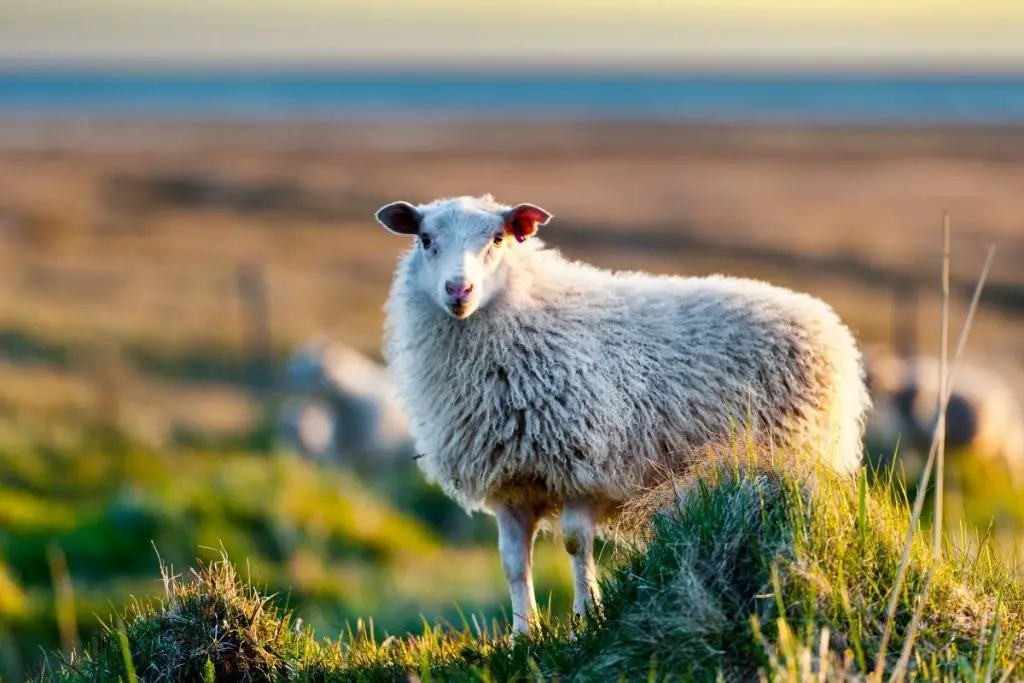
Researchers have tested sheep to determine their intellectual capacity. Here are a few studies:
Study 1: Cognition
Jennifer Morton and Laura Avanzo conducted a study in 2010 to determine if sheep could learn, memorize, and re-learn new information.
The researchers used blue and yellow buckets to test the sheep, rewarding them with pellets if they selected the right bucket. The sheep learned they would get pellets when they selected a specific colored bucket. They concluded sheep are smart enough to differentiate colors.
The same test was repeated 6 weeks later, and the tested sheep could remember what bucket to pick. The researchers concluded the sheep could memorize information.
When the buckets were reversed, the sheep struggled to choose the ‘new’ correct bucket but quickly adapted to the new criterion after two days. They concluded sheep can adapt to new situations.
In the same study, they replaced the buckets with cones. The scientists observed that the sheep were not as responsive to the different shapes as they were to the different colored pails. The research concluded that sheep can differentiate shapes but recognize differences in color better than shape.
Study 2: Relationships
Sheep are herd animals who form social bonds with each other. In 1993, scientists did research to gain more understanding of the social organization of male sheep. The three-year study showed that rams form strong, long-term bonds with other rams.
The scientists also observed that the rams that had a close relationship came to the defense of weaker male sheep and even helped each other in fights.
Study 3: Recognition
A 1994 study concluded sheep use visual and olfactory cues to recognize the faces of sheep and humans. The experiment used photographs of sheep and humans in both frontal and profile views as stimuli.
Sheep use body shape, posture, appearance, and direction of movement to identify individuals quickly.
Maternal ewes use olfactory cues to find their lambs. Sheep also use their excellent sense of smell to detect predators long before they come into view.
Social Intelligence In Sheep
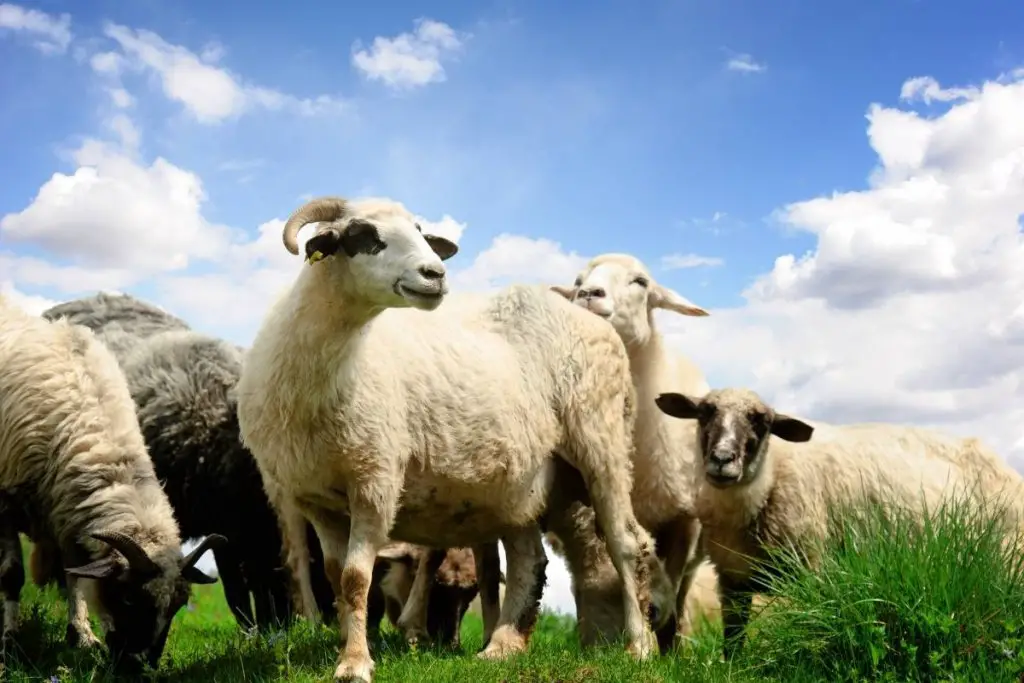
Sheep are highly social animals, and need to be around other sheep for their well-being.
How Sheep Relate to Others
Rams form friendships with other rams, and ewes form friendships with other ewes. These mutual interactions are crucial to protecting the flock, especially the lambs.
Ewes and their lambs form long-lasting bonds. Lambs separated early from their mothers after birth become distressed for days. In severe cases, the distress may cause a lamb to have stunted growth and poor immunity.
Lambs socially interact with peers as they jump around and play. A maternal ewe can use her olfactory senses to recognize the smell of her lamb within hours of giving birth.
Removal of one sheep from the rest of the herd leads to the isolated sheep developing stress and anxiety. The need for social interaction for isolated sheep is strong, such that photographs of similar sheep can help reduce stress and their heart rate.
How Sheep Communicate
Sheep communicate with each other by producing bleats (‘baa’ sounds). Even though these sounds all sound more or less the same to the human ear, they are not.
Bleats have different pitches and tones. A bleat can become more intense, especially when alerting other sheep about danger. A mother ewe communicates with her lamb by producing rumbling, low-pitch sounds.
Sheep learn from other sheep, making it easy for sheep to communicate using body language and facial expressions. For example, observing ear positions can help other sheep and humans know how a sheep is feeling. Ears that hang loosely show that the sheep are happy and relaxed. But, ears that point back show that the sheep are fearful or in pain.
How Sheep Relate to Humans
Sheep can recognize the human faces and faces of other sheep they have formed a close connection. Studies have shown that they can memorize up to 50 individual photos of sheep and humans for two years.
What Are The Smartest Breeds Of Sheep?
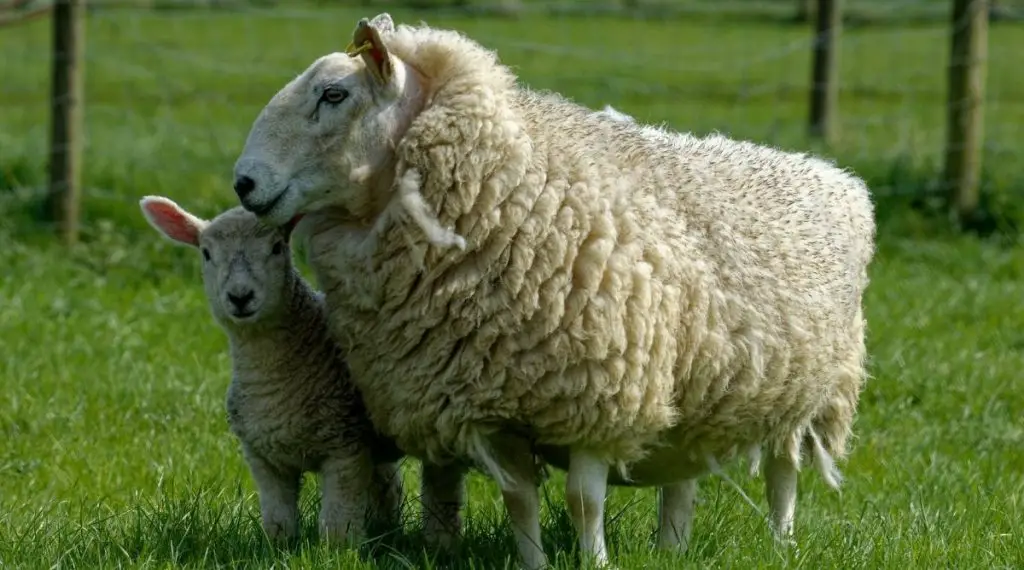
While there haven’t been studies done specifically on the smartest breeds of sheep, a couple breeds stand out as especially intelligent: The Icelancid Leadersheep and the Cheviot.
The Icelandic Leadersheep
According to early Icelandic records, the Icelandic leadersheep breed arrived in Iceland with the original settlers. They specifically chose the sheep for its intelligence and capability to lead sheep flocks and sense danger.
Apart from their high intelligence and alertness, leader rams kept at the Southram Breeding Center in Iceland are described as gentle, sensible, and eager to learn and please humans.
Cheviot Sheep
The Cheviot sheep originated around the border of Scotland and England. Sheep owners describe them as intelligent, independent, and resilient.
The breed can survive in cold and wet winter climatic conditions and hot and dry summers when food is scarce.
Cheviot female sheep also have excellent motherly instincts.

